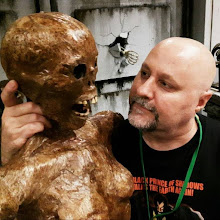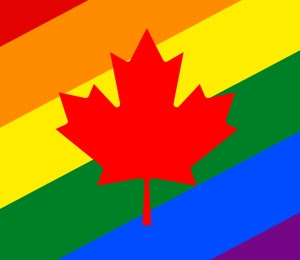The following post is based on a paper I presented at TV Fangdom: A Conference on Television Vampires (June 7-8, 2013). There is much discussion devoted to modern vampires, in series such as True Blood, Buffy the Vampire Slayer, and The Vampire Diaries. But to truly appreciate today's bloodsuckers, one must explore how they evolved on television, a process that has spanned over sixty years.
In part one of this lighthearted look at TV vampires, I examine the pioneering years, from 1949-1969. (Read part two | Read part three)
When they’re not tearing into our throats for sustenance, vampires been winning over our hearts through comedy, song, and dance. The bloodsucking undead first appeared in variety programming, which has been a staple on the small screen since the early days of television. These types of productions offer a snapshot of the current state of popular culture, often influenced by politics, the arts, and other societal trends. As such, when we specifically examine vampires in variety programming, we can see how they've inspired other aspects of popular culture, and how they themselves have been influenced by society at any given time.
I've unearthed close to 1,100 distinct appearances of vampires on television, and about ten percent of these occur in variety programming--and in no other category will you find a more diverse group of these creatures of the night. For this discussion, therefore, I've selected examples that are unique, iconic, and definitely products of their time.
The Pioneering Years: 1949-1969
In the pioneering years of television, two vampire archetypes emerged in variety programming, which were based on the most-recognized male and female bloodsuckers of the day: Bela Lugosi as Dracula, and Maila Nurmi as Vampira. |
| Bela Lugosi as Dracula |
 |
| Maila Nurmi as Vampira |
Early television variety programming was based on contemporary radio shows of the day, and one of the first was The Texaco Star Theater, starring comedian Milton Berle. In an episode from 1949, Bela Lugosi appeared in three skits. Arguably, Lugosi’s Dracula was, at that time, the most identifiable vampire to North American audiences, so it’s fitting that he was the first actor to portray a vampire on television!
In one of these skits, Lugosi wore his famous opera cape, and used his trademark Dracula mannerisms for comedic affect. Here’s a clip:
Berle should make it a must to get one wild sketch into each show, the sort of slapstick, cornball idiocy build around Bela Lugosi.
Lugosi also appeared as Dracula on other variety shows, including The Speidel Show in 1950, and You Asked For It in 1953. During this period, most other--if not all--male television vampires were based on Lugosi's Dracula. Rather that focus on them, I'd like to devote some time to the iconic ghoul known as Vampira.
 |
| Nurmi & Lugosi |
A brief background on the Vampira character: Maila Nurmi had attended a Halloween party in Los Angeles in 1953, dressed as the "ghoul woman" from The Addams Family cartoons published in the New Yorker Magazine. (We now know this character as "Morticia Addams," but she wasn't given a name until the television show in 1964.) Nurmi was spotted by television producers, who hired her to star in a new show that would broadcast old horror movies.
 The Vampira Show (1954) was an instant hit, and Vampira was the first horror movie host; she quickly became a local celebrity, and was a popular presence at events throughout Los Angeles. She even graced the pages of LIFE magazine, TV Guide, and Newsweek. Unfortunately, when Nurmi refused to sign over her character likeness and name to ABC, she was fired, and the show was cancelled. An attempted revival of her show on a competing network was short-lived.
The Vampira Show (1954) was an instant hit, and Vampira was the first horror movie host; she quickly became a local celebrity, and was a popular presence at events throughout Los Angeles. She even graced the pages of LIFE magazine, TV Guide, and Newsweek. Unfortunately, when Nurmi refused to sign over her character likeness and name to ABC, she was fired, and the show was cancelled. An attempted revival of her show on a competing network was short-lived.Maila Nurmi created an image (and show format) that would be copied across the United States. Unfortunately, since The Vampira Show aired live, there are no extant episodes; however, a few short clips still exist--such as the opening to the show itself.
(In case you couldn't make it out, after Vampira screams, she says, "Screaming relaxes me so.")
Vampira's look became the inspiration for numerous Gothic vampire/witches, who often expressed themselves through song in variety programming. Lookalikes later appeared in episodes from The Red Skelton Show (1955, Mary Beth Hughes); Your Hit Parade (1956, Gisele MacKenzie); The Dinah Shore Chevy Show (1957, Dinah Shore and Betty Hutton); and The Entertainers (1965, Carol Burnett, Caterina Valente and Chita Rivera).
In part two, I will take a look at the period from 1970-1989, which is what I call the "decades of decadence." This is when vampires truly became a mainstay on television, and started influencing other aspects of popular culture--and in some cases, mirroring societal concerns of the day.








0 comments:
Post a Comment